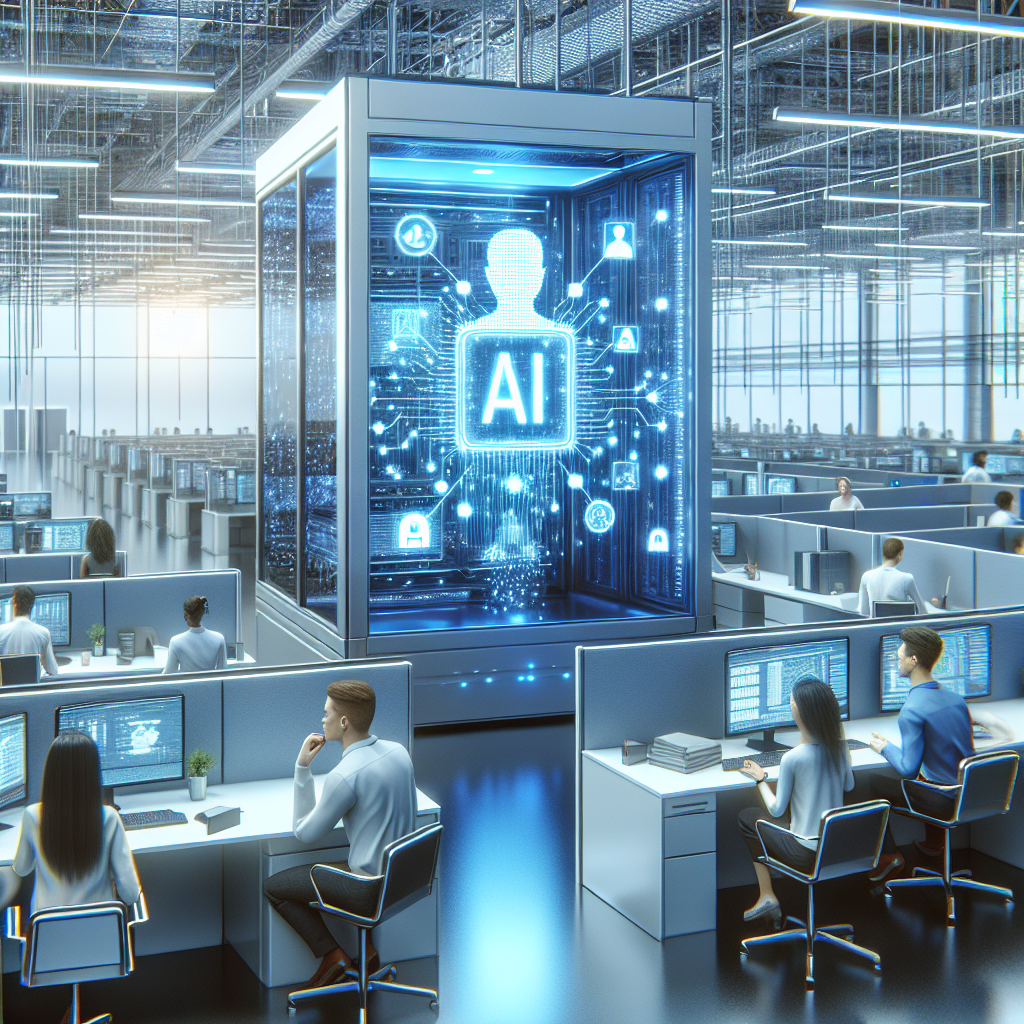In today’s digital age, the boundaries of workplace privacy are being reshaped by the emergence of artificial intelligence (AI). AI technology is revolutionizing the way organizations operate, increasing efficiency, and streamlining processes. However, the use of AI in the workplace also raises concerns about employee privacy and data protection. This article will explore how AI is reshaping workplace privacy, the benefits and challenges it presents, and provide guidance on how organizations can navigate this new landscape.
AI in the Workplace: Reshaping Privacy
AI technology is being increasingly integrated into various aspects of the workplace, from recruitment and performance management to employee monitoring and data analysis. This technology has the potential to revolutionize the way organizations operate, making processes more efficient and accurate. However, the use of AI in the workplace also raises concerns about employee privacy and data protection.
One of the ways AI is reshaping workplace privacy is through the collection and analysis of employee data. AI algorithms can analyze vast amounts of data to identify patterns and trends, enabling organizations to make more informed decisions about their workforce. For example, AI can be used to predict employee turnover, identify high-performing employees, and even monitor employee behavior.
While this data-driven approach can provide valuable insights for organizations, it also raises concerns about employee privacy. The collection and analysis of personal data can potentially infringe on employees’ privacy rights, leading to questions about how this data is being used and protected.
Another way AI is reshaping workplace privacy is through the use of monitoring technologies. AI-powered tools can track employee activities, such as internet usage, email communications, and even physical movements within the workplace. While these tools can help organizations monitor productivity and ensure compliance with company policies, they also raise concerns about employee surveillance and invasion of privacy.
Benefits and Challenges of AI in the Workplace
The use of AI in the workplace offers numerous benefits, such as increased efficiency, improved decision-making, and enhanced productivity. AI algorithms can automate repetitive tasks, freeing up employees to focus on more strategic and creative work. AI can also analyze data at a speed and scale that would be impossible for humans, enabling organizations to make data-driven decisions that drive business growth.
However, the use of AI in the workplace also presents challenges, particularly when it comes to privacy and data protection. As AI technology becomes more sophisticated, organizations must ensure that they are collecting and using employee data in a responsible and ethical manner. This includes obtaining consent for data collection, implementing robust security measures to protect data, and being transparent about how data is being used.
Navigating the New Landscape of Workplace Privacy
As organizations navigate the new landscape of workplace privacy shaped by AI, there are several steps they can take to ensure they are balancing the benefits of AI with the protection of employee privacy. Here are some best practices for organizations to consider:
1. Obtain Consent: Organizations should obtain explicit consent from employees before collecting and using their personal data. This can help build trust with employees and ensure compliance with data protection regulations.
2. Implement Robust Security Measures: Organizations should implement robust security measures to protect employee data from unauthorized access or misuse. This can include encryption, access controls, and regular security audits.
3. Be Transparent: Organizations should be transparent about how employee data is being collected, used, and stored. This can help employees understand the purpose of data collection and feel more comfortable with the use of AI in the workplace.
4. Limit Data Collection: Organizations should only collect the data that is necessary for the purposes of AI analysis. This can help minimize the risk of infringing on employee privacy rights and ensure that data is being used responsibly.
5. Educate Employees: Organizations should educate employees about the use of AI in the workplace and how it impacts their privacy rights. This can help employees understand the benefits and challenges of AI technology and feel more empowered to protect their privacy.
FAQs
Q: Can employers monitor employee activities using AI technology?
A: Employers can monitor employee activities using AI technology, but they must do so in a responsible and ethical manner. Employers should obtain consent from employees before monitoring their activities and ensure that data is being collected and used in compliance with data protection regulations.
Q: How can employees protect their privacy in the workplace?
A: Employees can protect their privacy in the workplace by being aware of their rights and asking questions about how their data is being used. Employees should also be cautious about sharing personal information and ensure that they are following company policies and procedures related to data protection.
Q: What are the benefits of AI in the workplace?
A: The benefits of AI in the workplace include increased efficiency, improved decision-making, and enhanced productivity. AI technology can automate repetitive tasks, analyze data at scale, and provide valuable insights that help organizations make more informed decisions.
In conclusion, AI technology is reshaping the boundaries of workplace privacy, presenting both benefits and challenges for organizations. By following best practices and being transparent about how data is being used, organizations can ensure they are balancing the benefits of AI with the protection of employee privacy. As AI technology continues to evolve, it is essential for organizations to prioritize data protection and privacy rights to build trust with employees and ensure compliance with regulations.

